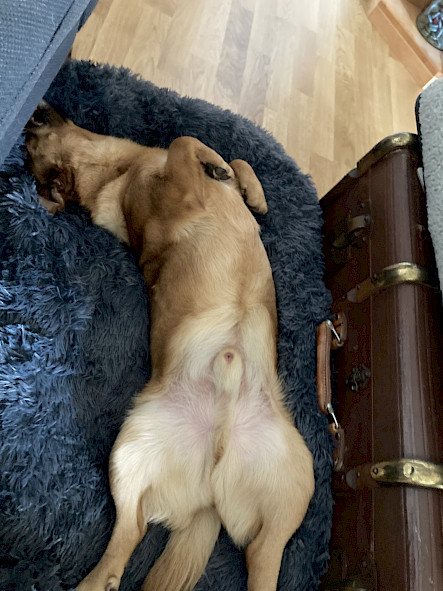Note on
Since July 10th we have a new four-legged family member, a dog to be precise. Dingo is his name. He is a rescue dog from Romania and his favourite hobbies are: sleeping and snoring.
We got Dingo from the Tierschutzbrücke München. It’s an association which has a close relationship to the animal shelter Casa Cainelui in the city of Timisoara in western Romania since 2001. Dogs are being rescued from local killing shelters (yep, those exist), nursed up and brought to Germany and other countries. In addition, castration campaigns are carried out regularly to get to the root of the problem of the uncontrolled growing number of stray dogs in Romania.

The process of getting Dingo via the Tierschutzbrücke was serious and professional. We were assigned a nice lady who is responsible for the placement of the dogs to Munich. She looked at our living situation and asked us honestly about our motives and experiences with dogs. You can see from the association and the staff that the main concern is animal welfare.

After her “go” we went dog shopping and surrendered to the marketing and products of the dog industry. We didn’t leave anything out: tick tongs, two different lines (a short line and a drag line), three different brushes (underfur brush, normal brush and massage brush), treats and food in different variations (from veggie to meat, from organic to conventional), toys, dog bed, pharmacy bag, dog shampoo, ... After the first big shopping tour I could understand and extrapolate what a gigantic industry this must be. In fact: 4.325 billion Euro turnover, that is the house number of the German pet industry in 2019. Fun fact: there are 10.1 million dogs living in German households. And: “Dog snacks have been growing dynamically for years” is a sentence my brain has never had to process before.
One week after the shopping tour, Dingo arrived. He’s a super nice guy, who always wants to cuddle a lot and whom we took to our hearts very quickly.

The daily rhythm is determined by him since then. Our day is now divided as follows:
- In the morning a long dog walk (30 to 45 minutes).
- At noon a short dog walk (10 minutes).
- In the late afternoon again a long dog walk (30 to 45 minutes).
- Late in the evening, a short dog walk (10 minutes).
- Repeat.
What we have already noticed is that, in addition to the time and money involved, normal everyday life has also changed considerably when looking at the usual social activities. Just drive into town quickly for a visit to a restaurant? Not possible, Dingo isn’t used to a restaurant situation and public transport. Spontaneous beer garden session with friends? Dingo on a leash in combination with possibly other dogs nearby still holds too much potential for aggression and too much stress for everyone involved.
We now simply try to approach his education in a calm and step-by-step manner: good leashing, learning the basic commands, learning new situations (driving the bus, going to a restaurant, etc.) and dog training. Along the way Dingo will learn a lot of new things, but we will certainly learn a lot more.